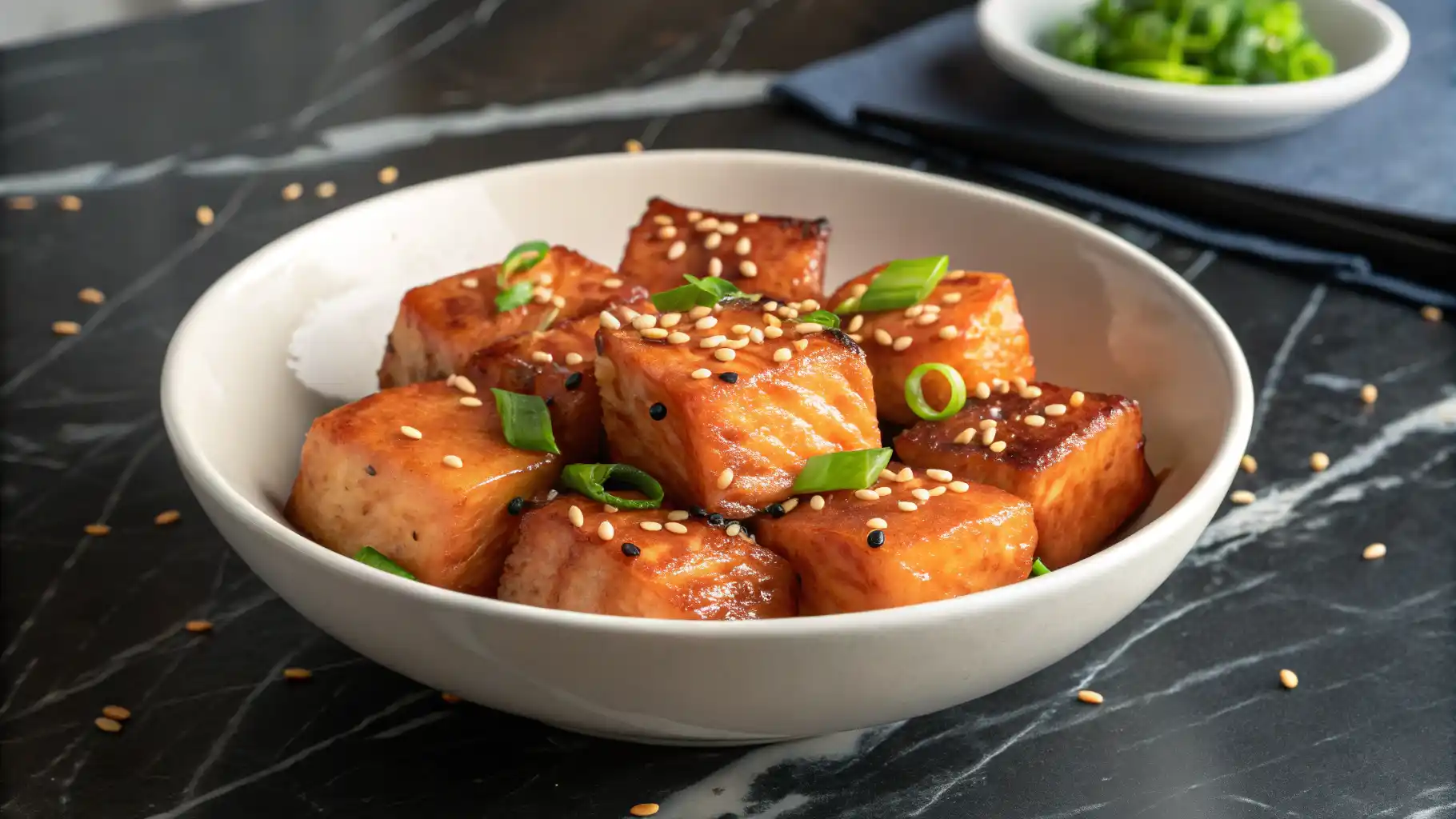
Salmon is a beloved fish, rich in flavor, texture, and health benefits. If you’re looking for a simple yet flavorful seafood dish, the salmon bites recipe is the perfect solution. These bite-sized chunks of tender salmon are a versatile treat—ideal as an appetizer, snack, or even a light main dish. With a variety of cooking methods, seasonings, and dips, salmon bites can be tailored to suit any palate. Whether you’re new to cooking salmon or a seasoned pro, this recipe is easy to follow and guarantees a satisfying meal.
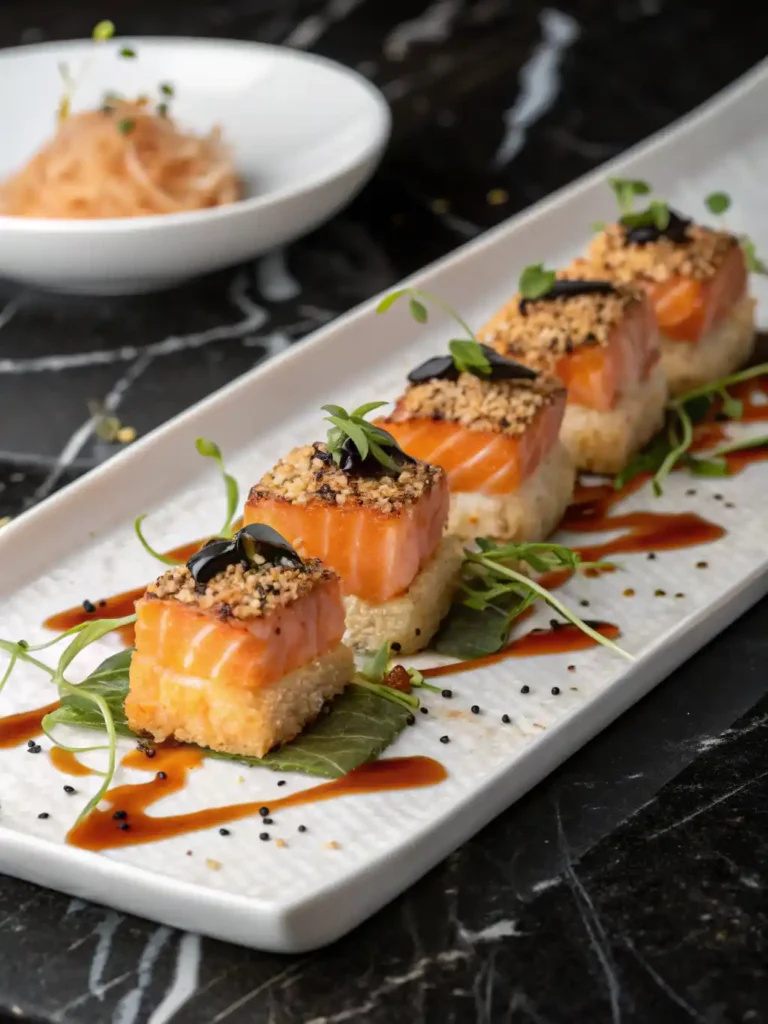
Table of Contents
Essential Ingredients for Salmon Bites
Creating a flavorful salmon bites recipe doesn’t require many ingredients, but the ones you choose will make a big difference in taste. Below is a list of essential ingredients you’ll need:
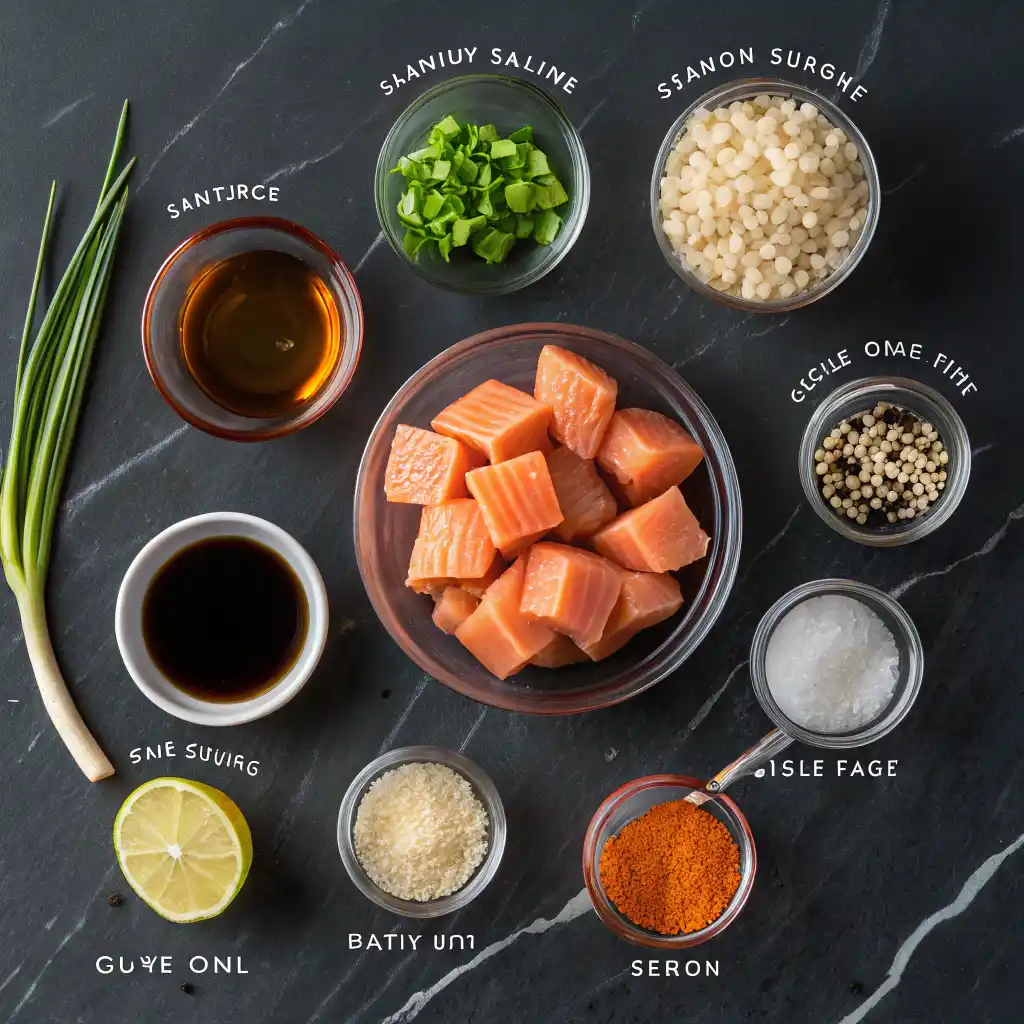
- Salmon fillet: The base of your recipe. Fresh or frozen, boneless, and skinless is ideal.
- Olive oil: For seasoning and adding moisture.
- Seasonings: Garlic powder, smoked paprika, salt, black pepper, and any other spices you prefer.
- Lemon: Fresh lemon juice will brighten the flavor and add a hint of tanginess.
- Fresh herbs: Parsley or dill for garnish adds a fresh, aromatic touch.
You can customize the seasoning based on your preferences. For a more bold flavor, add cayenne pepper or mustard powder.
Step-by-Step Instructions for Making Salmon Bites
Follow this simple salmon bites recipe to create crispy, tender bites that will be a hit at your next meal.
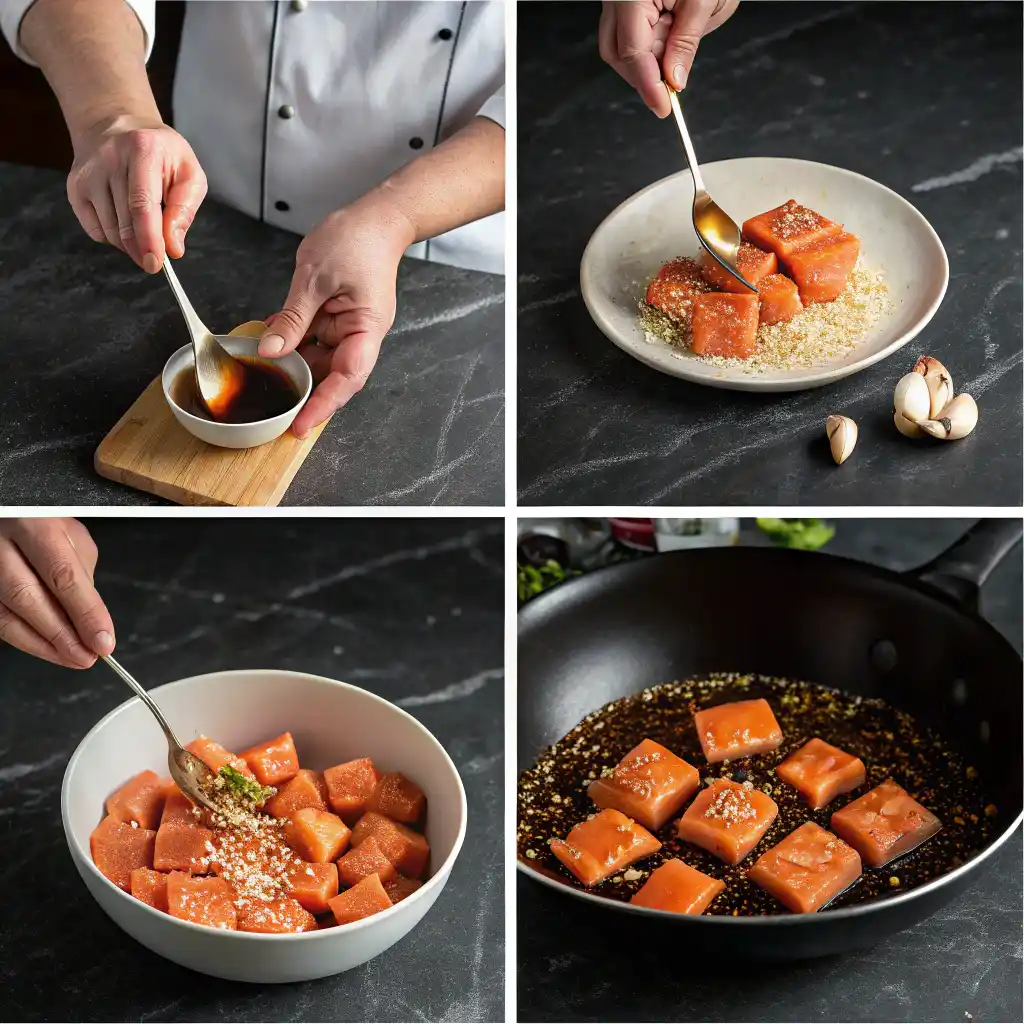
Preparing the Salmon
Start by removing the skin and bones from the salmon fillet. Then, cut the fillet into bite-sized chunks—approximately 1-inch cubes. Pat the pieces dry with paper towels to remove any excess moisture.
Seasoning the Salmon
Place the cubed salmon in a bowl and drizzle with olive oil. Add the garlic powder, smoked paprika, salt, and black pepper. Toss the salmon pieces until they are evenly coated with the seasonings.
Now it’s time to cook the salmon bites. Depending on your preference, you can bake, grill, or air-fry them. Each method gives a slightly different texture but retains the delicious flavor.
Cooking Methods: Oven, Grill, and Air Fryer
There are several cooking methods you can use for your salmon bites recipe, each offering a unique result.
Baking in the Oven
Preheat your oven to 400°F (200°C). Line a baking sheet with parchment paper and spread the seasoned salmon bites in a single layer. Bake for 10-12 minutes or until the salmon is cooked through and slightly golden on the edges.
Grilling
Preheat your grill to medium-high heat. Place the salmon bites on a grill-safe pan or directly on the grill grate. Grill for about 3-4 minutes per side, ensuring the salmon is fully cooked but still juicy.
Air Frying
Preheat your air fryer to 400°F (200°C). Arrange the salmon bites in a single layer in the air fryer basket and cook for 7-8 minutes, shaking the basket halfway through for even cooking.

Pairing Your Salmon Bites with Complementary Dishes
Salmon bites can be paired with a variety of side dishes, making them a versatile addition to any meal. Here are some great ideas:
- Rice Pilaf: A light and fluffy rice dish with herbs and spices complements the rich flavor of the salmon.
- Roasted Vegetables: Try pairing with roasted Brussels sprouts, sweet potatoes, or asparagus for a well-rounded meal.
- Green Salad: A fresh salad with mixed greens, avocado, and a tangy vinaigrette balances the richness of the salmon.
No salmon bites recipe is complete without a flavorful dipping sauce. Here are some excellent options:
- Tartar Sauce: A classic pairing for salmon that adds a creamy, tangy touch.
- Garlic Aioli: A smooth and garlicky dip that enhances the savory flavors of the salmon.
- Sriracha Mayo: For those who enjoy a bit of spice, mix sriracha sauce with mayonnaise for a creamy, spicy dip.
Feel free to get creative with your dips. A simple lemon butter sauce or mustard glaze can also work wonders.
Health Benefits of Eating Salmon Bites
Eating salmon bites is not only delicious but also beneficial for your health. Salmon is a nutrient-dense fish packed with essential vitamins and minerals, including:
- Omega-3 fatty acids: These healthy fats are known to support heart health, reduce inflammation, and improve brain function.
- Protein: Salmon is an excellent source of high-quality protein, which helps build and repair tissues.
- Vitamin D: Salmon is one of the best natural sources of vitamin D, which supports bone health and immune function.
- B Vitamins: These vitamins help your body convert food into energy and maintain healthy skin, hair, and eyes.
Including salmon bites in your diet is an easy and tasty way to enjoy the many health benefits of this nutrient-packed fish
When you’re looking for a healthy and delicious dish that’s easy to prepare, the salmon bites recipe stands out as a fantastic option. These bite-sized pieces of salmon are packed with flavor and nutrients, making them a perfect addition to any meal. Whether you’re cooking for a weeknight dinner or a special occasion, this recipe is simple yet impressive. Salmon is an incredibly versatile fish that can be seasoned and cooked in a variety of ways, allowing you to customize your salmon bites recipe to suit your taste. Let’s dive deeper into the role of salmon in a balanced diet, and explore tips for storing, reheating, and freezing your salmon bites.
Other easy salmon recipes
Easy Salmon Dinner Ideas for Busy Nights
Sushi Topped with Succulent Salmon
Storing and Reheating Salmon Bites
If you’ve prepared a large batch of salmon bites, proper storage is essential to maintain their flavor and texture. Once cooked, let your salmon bites cool down to room temperature before storing them in an airtight container.
- Fridge Storage: Store the bites in the refrigerator for up to 2-3 days. Make sure to place them in an airtight container to prevent moisture loss and retain their flavor.
- Freezer Storage: For longer storage, you can freeze cooked salmon bites. Wrap them tightly in plastic wrap or aluminum foil and place them in a freezer-safe bag. They can last up to 3 months in the freezer.
To reheat salmon bites, avoid using the microwave, as it can dry them out. Instead, you can reheat them in the oven or a skillet to retain their crispiness:
- Preheat the oven to 350°F (175°C) and bake for 5-8 minutes.
- Alternatively, reheat in a skillet over medium heat for 3-4 minutes per side.
Tips for Freezing Cooked Salmon Bites
Freezing cooked salmon bites is a great way to preserve leftovers for future meals. When done correctly, frozen salmon bites can maintain their flavor and texture after reheating. Here are some tips for freezing cooked salmon bites:
- Cool Before Freezing: Allow the cooked salmon bites to cool to room temperature before freezing them. This prevents excess moisture from forming, which can make the bites soggy when reheated.
- Use Proper Packaging: Wrap the salmon bites in plastic wrap, followed by a layer of aluminum foil, or place them in a freezer-safe bag. This will help prevent freezer burn and preserve the quality of the bites.
- Label and Date: Label the bag with the date of freezing so you can keep track of how long they’ve been in the freezer. Ideally, frozen salmon bites should be consumed within 3 months for the best quality.
Reheat the frozen salmon bites by baking or pan-frying, as mentioned earlier.
Explore more nutritious meals by visiting our Healthy Recipes section.
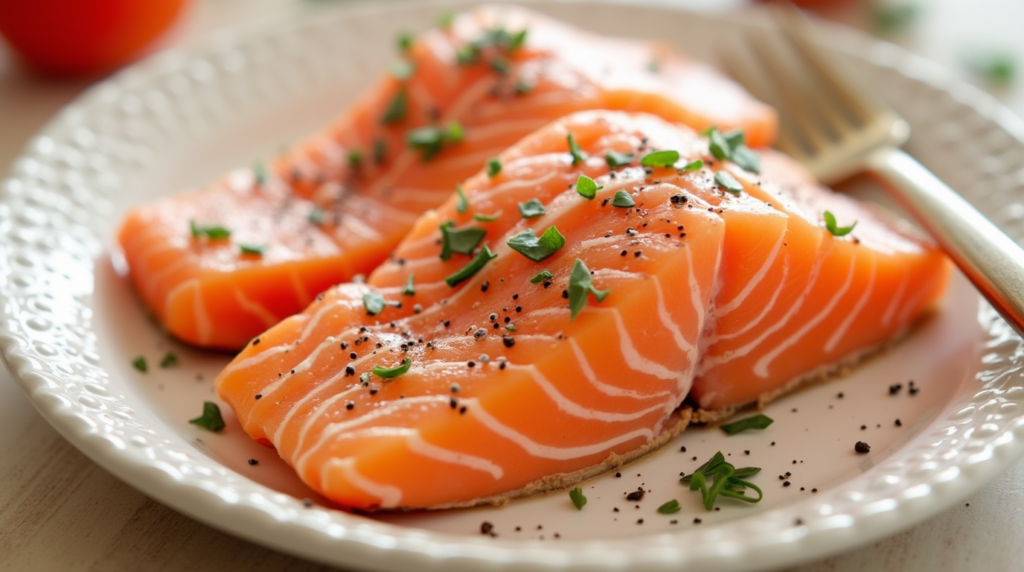
.
conclusion
In conclusion, the salmon bites recipe is an incredibly versatile, flavorful, and nutritious option for any meal. With its high content of protein and omega-3 fatty acids, salmon makes an excellent addition to a balanced diet. By following a few simple tips for storing, reheating, and freezing, you can enjoy your salmon bites for days to come. Whether you’re meal prepping for the week or simply looking for a healthy, delicious dish, salmon bites are a perfect choice. Plus, with the option to use canned salmon or make them gluten-free, this recipe is adaptable to various dietary preferences.
Frequently Asked Questions About Salmon Bites Recipe
The salmon bites recipe is a simple and adaptable dish, but you may still have some questions. Below are answers to some of the most common inquiries.
Can I Use Canned Salmon for This Recipe?
Yes, you can use canned salmon as a substitute for fresh salmon in your salmon bites recipe. Canned salmon is already cooked, so you won’t need to worry about undercooking it. Just be sure to drain the liquid and remove any bones before using it in the recipe. Keep in mind that the texture of canned salmon is slightly different from fresh salmon, so the bites may not be as firm or crispy, but they will still be tasty.
How Long Do Salmon Bites Last in the Fridge?
Cooked salmon bites will last in the fridge for about 2-3 days when stored in an airtight container. It’s important to refrigerate them as soon as possible after cooking to prevent bacterial growth. If you plan to store them for longer, freezing is the better option.
Can I Make Salmon Bites Gluten-Free?
Absolutely! The salmon bites recipe can easily be made gluten-free. Simply ensure that the breadcrumbs or coating you use are gluten-free. You can substitute regular breadcrumbs with gluten-free breadcrumbs or even use crushed gluten-free crackers for the coating. Additionally, double-check any sauces or dips to ensure they are also gluten-free.
- Use gluten-free breadcrumbs or crushed crackers for the coating.
- Ensure any sauces or seasonings are free from gluten.
Are Salmon Bites Suitable for Meal Prep?
Yes, salmon bites are an excellent choice for meal prep. They store well in the fridge for a few days and can be easily reheated. You can prepare a batch of salmon bites at the beginning of the week and enjoy them throughout the week for quick lunches or dinners.
- Store them in an airtight container in the fridge for up to 3 days.
- Reheat in the oven or skillet for the best texture.
Salmon is a healthy protein source, making it an ideal option for meal prepping, especially for those following a balanced diet.
How Do I Know If My Salmon Is Fresh?
Fresh salmon is the key to a delicious salmon bites recipe. To determine if your salmon is fresh, here are a few tips to look for:
- Smell: Fresh salmon should have a mild, ocean-like smell. If it smells fishy or sour, it may be past its prime.
- Appearance: The flesh should be moist, translucent, and vibrant in color. If the flesh looks dry, discolored, or mushy, it may not be fresh.
- Touch: Gently press the salmon with your finger. If it bounces back, it’s fresh. If the indentation remains, it may be too old.
Be sure to purchase fresh salmon from a trusted source, and always check the expiration date if you’re buying pre-packaged salmon
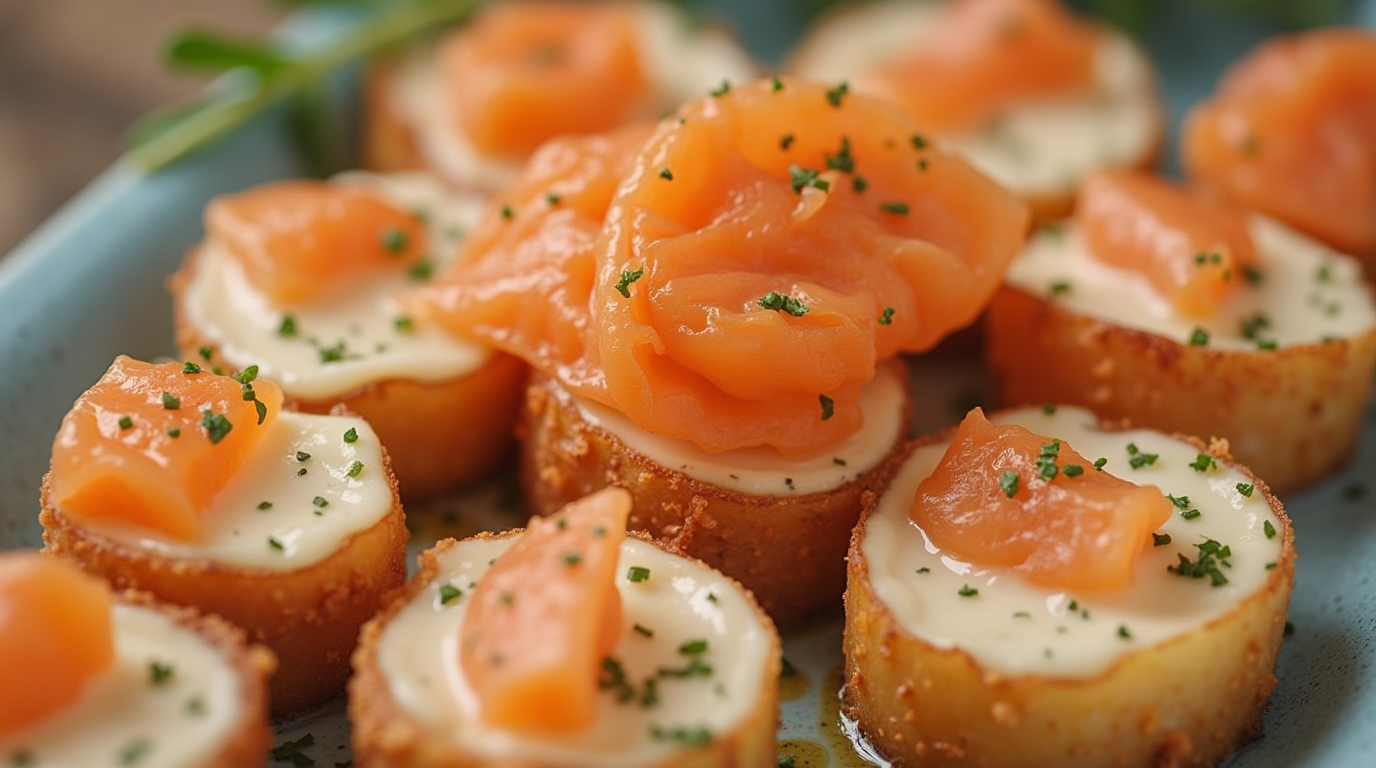
Salmon Bites Recipe
Ingredients
- 1 lb fresh salmon cut into bite-sized cubes
- 1/2 cup breadcrumbs
- 1/4 cup grated Parmesan cheese
- 1 egg beaten
- 1 tablespoon lemon juice
- 2 tablespoons chopped parsley
- 1 teaspoon garlic powder
- Salt and pepper to taste
- Olive oil for frying
Instructions
- In a mixing bowl, combine the salmon cubes with breadcrumbs, Parmesan cheese, garlic powder, parsley, lemon juice, and egg. Season with salt and pepper to taste.
- Form the mixture into bite-sized balls or patties.
- Heat olive oil in a skillet over medium heat.
- Cook the salmon bites for 3-4 minutes on each side, until golden brown and crispy.
- Remove from the skillet and drain on paper towels.
- Serve hot with your favorite dipping sauce.
Notes
- Freshness: Use fresh, high-quality salmon for the best flavor and texture. Frozen salmon can work, but fresh is recommended for this recipe.
- Breadcrumb Variations: You can substitute regular breadcrumbs with panko for an extra crispy texture, or use gluten-free breadcrumbs for a gluten-free option.
- Flavor Adjustments: Feel free to add extra spices like paprika or cayenne pepper for a bit of heat, or herbs like dill for a more vibrant flavor.
- Baking Option: If you prefer a healthier alternative, bake the salmon bites in a preheated oven at 375°F (190°C) for 12-15 minutes, flipping halfway through.
- Dipping Sauces: Serve with tartar sauce, garlic aioli, or a spicy sriracha mayo for added flavor.

